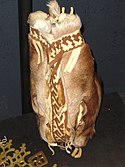In the uttermost East, being an account of investigations among the natives and Russian convicts of the island of Sakhalin, with notes of travel in Korea, Siberia, and Manchuria (1903) (14577802348)
Identifier: inuttermosteastb00hawe (find matches)
Title: In the uttermost East, being an account of investigations among the natives and Russian convicts of the island of Sakhalin, with notes of travel in Korea, Siberia, and Manchuria
Year: 1903 (1900s)
Authors: Hawes, Charles Henry, 1867-1943
Subjects:
Publisher: London, Harper
Contributing Library: Robarts - University of Toronto
Digitizing Sponsor: University of Toronto
View Book Page: Book Viewer
About This Book: Catalog Entry
View All Images: All Images From Book
Click here to view book online to see this illustration in context in a browseable online version of this book.
Text Appearing Before Image:
stood out here and there, making the monotony ofthe steppe more noticeable, but beyond the river one knewthat the scenery must change, as we approached the GreatKhingan or Hsinghan mountains. The Nonni is a tributaryof the Sungari, and is the only great river which flowsthrough the province of Heh-lung-kiang. It is navigableas far as Tsitsikar, and for light junks beyond even toMergen. At the point where the line crosses, it is exactlyhalf a mile in width. The great iron bridge, designed inRussia and made in America, was then in course of con-struction, and as the temporary wooden structure did notallow of our engine crossing, the trucks and horse-boxes hadto be pushed over by large numbers of Chinese workmen.While this operation was in contemplation, and it tookseveral hours to bring it about, we, passengers, traversedthe structure on foot to the western bank of the river,where I found the Russian town of New Tsitsikar spring-ing up. Having obtained a midday meal at a rough sort 428
Text Appearing After Image:
nil AUTHOR. (To face page 429. MANCHURIA TO CHITA 429 of restaurant, I joined some officers, their wives, and otherpassengers congregated at the western end of the bridge,where we waited two or three hours for the arrival of thetrain, pushed by its human motors. It was bitterly cold ;the great river was frozen across, and peasants were abouton the ice. One was hauling wood, and a solitary womanhad made a hole in the ice, and was rinsing clothes—aterribly cold process, for they froze as she slung them overher shoulder. A small crowd of Chinese coolies, clothedin wadded cotton garments, gathered round me, and,with childish curiosity, began to feel my fur coat. Theyhad never seen anything like it before, and asked me, Chto eto takoy? (What is it?) Malenkiy aleni( Young (rein)deer (skin) ), I replied. Then, without theleast hesitation—the Chinese and even the Russians put themost direct questions—they asked, Skolko stoit? ( Howmuch is it worth ?) I gave them a moderate figure, butth
Note About Images
Relevante Bilder
Relevante Artikel
RentierfellDas Ren beziehungsweise Rentier lebt fast überall um den Polarkreis, im Sommer in den Tundren und im Winter in der Taiga Nordeurasiens und Nordamerikas sowie auf Grönland und anderen arktischen Inseln. Von den verschiedenen Unterarten, auch von den Hirscharten, ist allein das nordeuropäische Ren zu einem wirklichen Nutztier geworden. Der Rauchwarenhandel war zeitweilig am leichtledrigen, weichen, glänzend braunen, mitunter moirierten Rentierfell europäisch-asiatischer Jungtiere interessiert, das unter der Bezeichnung Pijiki im Handel war. Die Felle ausgewachsener Rentiere sind ein beliebtes Mitbringsel von Nordlandfahrten, sie werden außerdem für Innendekorationszwecke und Vorleger exportiert. Die Felle der in Amerika caribou genannten nordamerikanischen Rentiere werden in noch geringerem Umfang ebenfalls als Dekorationsfelle und nicht für Kleidungszwecke genutzt. Lediglich die indigene Bevölkerung nähte sich Überkleidung aus Fellen ausgewachsener, langhaariger Rentiere, oft mit Seehundfell oder Polarfuchsfell zusammen verarbeitet, Trachten, wie sie auch heute noch bei besonderen Anlässen getragen werden. .. weiterlesen













